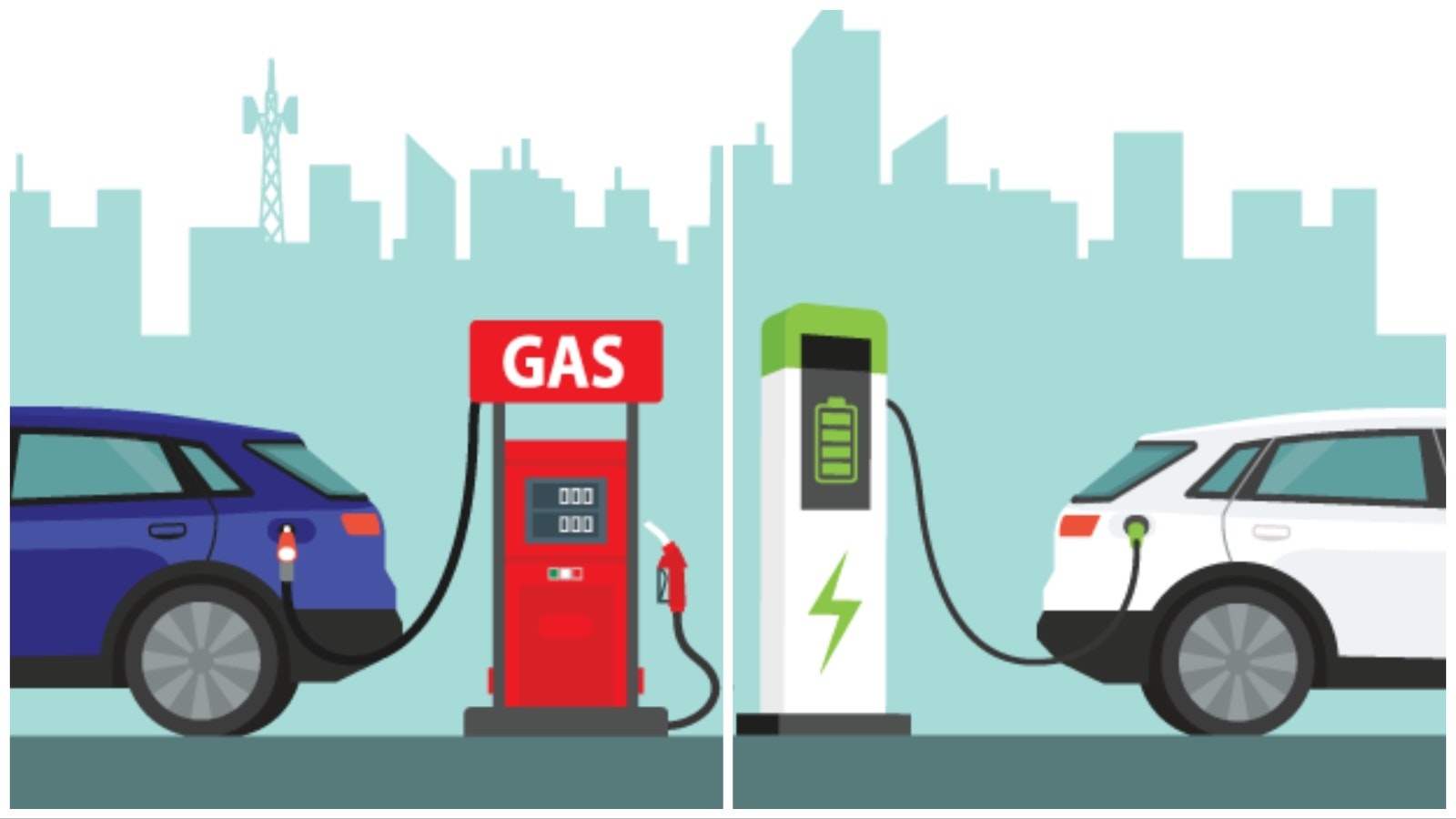More than a dozen states are adopting policies that will eliminate the sale of gas-powered vehicles over the next decade, and the EPA is proposing rules that will effectively ban the manufacturing of gas-powered vehicles.
The goal of these policies is widespread EV adoption, which it’s believed will lead to a reduction in transportation-related carbon dioxide emissions.
A new study by Mark P. Mills, senior fellow at the Manhattan Institute, finds that there are so many variables when it comes to the total emissions from EVs that no one really knows how much emissions will be reduced with these policies — and they may actually increase emissions.
Mills told Cowboy State Daily that these EV policies are based on a lot of flimsy assumptions and guesses.
“The point of this paper is to make sure policymakers understand that those who are claiming these radical CO2 [carbon dioxide] emissions reductions are selling a story, a guess and an aspiration,” Mills said. “They're not telling facts.”
Reality Is Different
Although EVs don’t produce emissions while they’re being driven, it takes a lot more emissions-producing energy to make an EV than it does a gas-powered car.
From the mining of ore, to the processing of ore to extract the minerals used in the vehicle, to the manufacturing process, there are so many variables that it’s impossible to know for certain there will be any net reduction in emissions over the life of an EV, the study says.
That also doesn’t include any emissions resulting from producing the electricity used to charge the vehicle.
Sen. Brian Boner, R-Douglas, said these uncertainties in the benefits of government-mandated EV adoption are why he and his colleagues introduced a resolution last session to phase out the sale of EVs in Wyoming. The resolution's sponsors, Boner said, wanted to highlight these issues.
“It might sound good in a committee hearing, but the reality is always quite a bit different,” Boner told Cowboy State Daily.
The resolution died in committee, but its sponsors’ intent was to start a conversation on government pushing people to drive certain cars. In that, it was a success, gaining national coverage.
Consumer Choice
Mills writes in the study that policymakers are hoping that exponential growth in EV demand will make the bans, mandates and incentives more politically acceptable. As much as it’s widely reported that consumers are rapidly switching to EVs, the numbers tell a different story.
Last year, the study notes, 7 million EVs were sold, which is a huge jump over the 3,000 units Tesla sold in 2012. However, it took six years after the introduction of the first Tesla before the company managed to sell 200,000 cars. Ford sold only 150,000 units of its Mustang Mack-E — the second most popular EV in America — two years after introduction.
Compare that to the original 1964 Mustang, which sold 1 million units 18 months after introduction. It took Tesla 92 months to reach that volume of sales, which is in an era when total volume of car sales in America were much higher than in 1964.
In 1983, Chrysler introduced the minivan, which sold 200,000 units in a single year.
Mills doesn’t dispute that the world will see tens of millions of EVs on the roads over the next decade, even without mandates.
“Good for [Tesla CEO] Elon Musk. He shook up the luxury car market,” Mills said.
But consumers are not warming up to EVs as rapidly as they have new lines of gas-powered vehicles, the study notes.
Mining
An EV battery weighs about 1,000 pounds, which holds the same energy as an 80-pound tank of gasoline. That battery is made from a wide range of minerals, including copper, nickel, cobalt and lithium, among others.
Citing findings by researchers at U.S. Argonne National Labs, Mills’ study notes that the data on the amount of emissions from the production of these minerals is extremely meager and difficult to determine with any certainty.
That means any claims of emissions reductions from driving EVs, Mills writes, is based on a “rough estimate or an outright guess.”
Among the most cited sources on emissions produced in the making of an EV is a report by the International Energy Agency (IEA), which determined a 50% reduction in life-cycle emissions for an EV.
As Mills states in his study, buried deep in that report are all the variables and uncertainties that make the figure a best-case scenario. In other plausible scenarios, the vehicles produce a net increase in emissions.
Assumptions
For example, the IEA estimates the battery size of the average EV at 40 kilowatt hours. This is about half the size of the batteries in the most popular EVs on the market.
The IEA also ignores, according to Mills' study, the greater use of aluminum in the EV body and frame, which is done to reduce the weight of the vehicle. Aluminum is an energy-intensive metal, so it increases the total emissions in the making of an EV.
A 2020 technical review of 50 analyses found that the estimates of EV emissions in these studies varied by a factor of five. Mills notes that such a wide range makes an average meaningless.
Boner said that Wyoming’s economy is so connected to mining that a lot of state lawmakers are often aware of how much mining is involved in producing an EV, which isn’t taken into consideration in other states that are adopting bans on gas-powered cars.
“We understand the implications of what it takes to get valuable minerals out of the ground,” Boner said.
Other Considerations
Besides the size of the battery is the location of the mines. The distance to transport ore to where it's refined greatly adds to emissions. Since much of these minerals are mined outside the United States, it’s difficult to get accurate data.
The same is true of the refineries, the location of the assembly factories and what energy source powers them.
Other factors that contribute to an EV’s total emissions are the battery lifespan and miles driven. Data shows that EVs are, on average, driven less than gas-powered cars, increasing the amount of carbon dioxide per mile.
Agnostic Approach
Mills’ study suggests that if the goal is reducing emissions from transportation, incentives for fuel-efficient vehicles and hybrids, which combine internal combustion engines with battery power, are going to be much more effective, especially ones that target high-emission drivers.
“That would be pickup truck drivers in Wyoming who drive long distances,” Mills said.
If the fuel-efficient truck costs $10,000 more, but incentives provide the buyer with $12,000, Mills said it would likely have a greater impact on emissions reductions than paying people to buy EVs and banning the sales of gas-powered vehicles.
“If Congress feels compelled to stimulate people to burn less fuel, we should be agnostic on how consumers do it, and give them choices of how they want to go about that,” Mills said.





